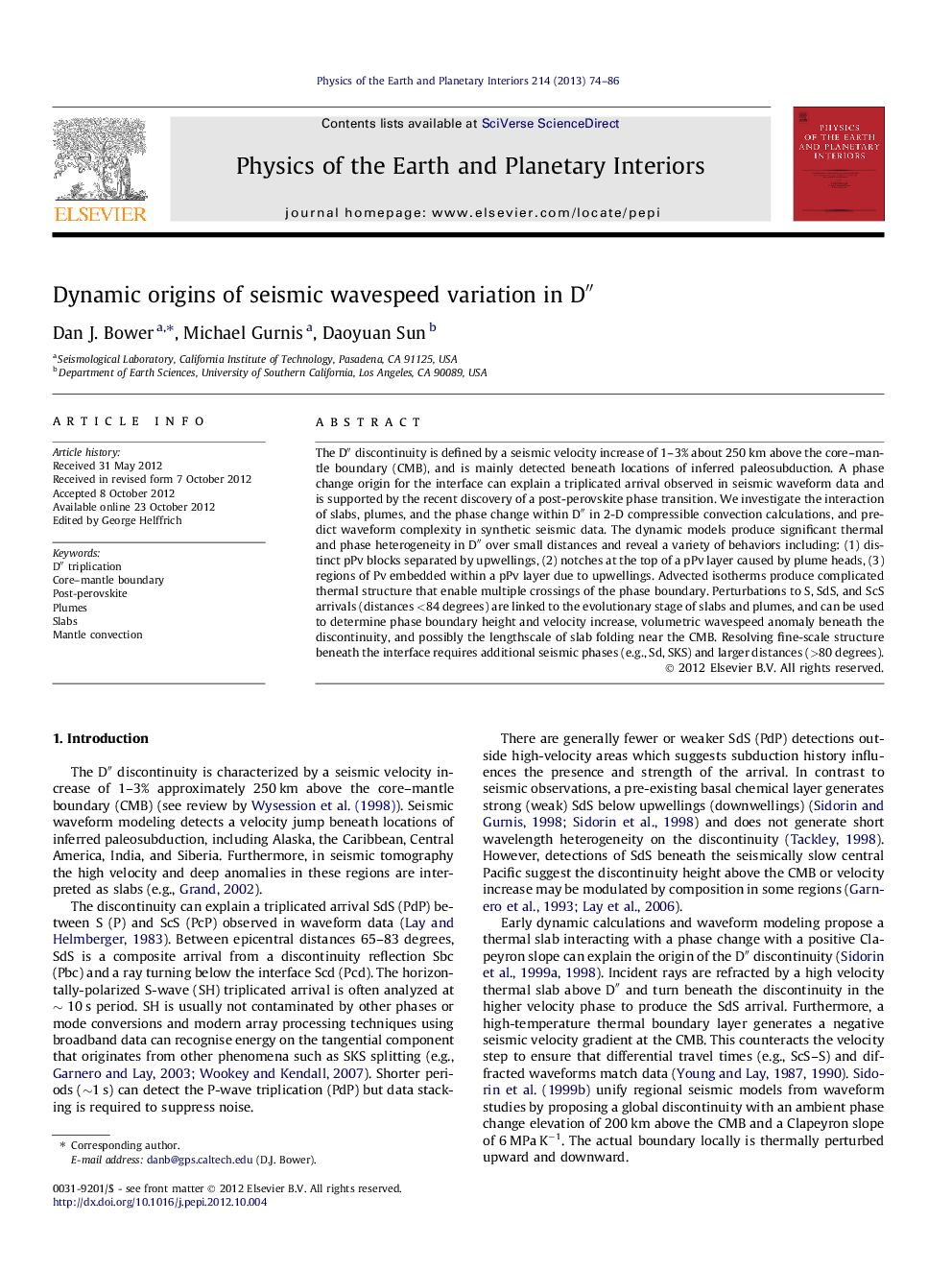| Article ID | Journal | Published Year | Pages | File Type |
|---|---|---|---|---|
| 4741758 | Physics of the Earth and Planetary Interiors | 2013 | 13 Pages |
The D″D″ discontinuity is defined by a seismic velocity increase of 1–3% about 250 km above the core–mantle boundary (CMB), and is mainly detected beneath locations of inferred paleosubduction. A phase change origin for the interface can explain a triplicated arrival observed in seismic waveform data and is supported by the recent discovery of a post-perovskite phase transition. We investigate the interaction of slabs, plumes, and the phase change within D″D″ in 2-D compressible convection calculations, and predict waveform complexity in synthetic seismic data. The dynamic models produce significant thermal and phase heterogeneity in D″D″ over small distances and reveal a variety of behaviors including: (1) distinct pPv blocks separated by upwellings, (2) notches at the top of a pPv layer caused by plume heads, (3) regions of Pv embedded within a pPv layer due to upwellings. Advected isotherms produce complicated thermal structure that enable multiple crossings of the phase boundary. Perturbations to S, SdS, and ScS arrivals (distances <<84 degrees) are linked to the evolutionary stage of slabs and plumes, and can be used to determine phase boundary height and velocity increase, volumetric wavespeed anomaly beneath the discontinuity, and possibly the lengthscale of slab folding near the CMB. Resolving fine-scale structure beneath the interface requires additional seismic phases (e.g., Sd, SKS) and larger distances (>>80 degrees).
► 2-D convection models of D″D″ with a phase transition. ► Synthetic waveform modeling of the lower mantle triplication. ► Significant thermal and phase heterogeneity over small distances. ► Advected isotherms enable multiple crossings of the phase boundary. ► Seismic data may reveal the evolutionary stage of slabs and plumes.
